Metal or Synthetic: Which Is the Best Winch Line Choice for You?

A winch is an essential tool for many facets of life, not to mention while riding off the beaten path in remote far-off lands. Even nearby, it has a lot of practical applications for the off-road community, who value this particular tool for its ability to recover and assist vehicles who might have broken down or become stuck, sunk, or wedged in something. We’ve all had that friend (or been that friend) who’s ended up in a precarious situation or tried a new challenge, and just didn’t quite hit the mark… When all else fails, a simple tug from a winch can change the trajectory of everyone’s day.
Selecting the right winch is already a challenging task, but choosing the type of line – either steel cable or synthetic – adds an additional layer of complexity. Each option comes with distinct advantages and disadvantages, so it’s important to know what these are, first, when deciding on the right winch style for your rig and its expected applications. This goes for both your ATVs and side-by-sides, so take a little time to learn a bit about the differences between metal and synthetic lines.
What Are the Options?
We should start by stating that there are several varieties to select from; it’s not just A or B. For instance, on the metal side, there are predominantly steel core, super swage, super flex, and fiber core. Their woven patterns, steel grade, and cores are what really differentiate the types. Synthetics likewise offer a smattering to sample, but they are mostly distinguishable by their fibers even if they share similar weaves and cores (when there is core, of course). The most common material is Dyneema, however you can find ropes made from Technora®, Vectran®, Spectra®, or even Kevlar®.
Within these categories, some stand out as both “strong as steel” but as flexible, water or heat resistant, and lightweight as our synthetic options. Superline® and AmSteel®-Blue are arguably the best of their kind, showing leaps and bounds with advancements in utility technology these days. We could go on and on about the nuances in size, shape, design, grading, and material combinations, but for the sake of this (hopefully swift) argument, we want to group the multifaceted styles and specific materials into two main categories: metal and synthetic.
Metal Made
Steel cables have been the standard in winching (and construction in general) since their inception. This version is known for their exceptional durability and resistance to abrasion. Even after all these years, steel is still the go-to line of choice for heavy-duty applications. They are resilient to damage, endure demanding tasks (like moving trees, rocks, and other stationary objects that fight back every step of the way), and when properly maintained, they can last some time. These also tend to be the less expensive option. Although, some would argue that some synthetic lines are more cost-effective in the long run because of their longevity.
For frequent, day-to-day use, steel cable is still a good choice for those who can bear the brunt of looking after the wire itself. You want to constantly observe for rust (which is a sign that any protective coating might be breached) and corrosion, which is the source of failure in this sort of rope. They are also quite heavier than the synthetic options per inch. This means it’ll add some significant weight to your vehicle upon installation. Plus, users need to be cautious of binding or twisting, which can compromise the cable's integrity, not to mention potentially compromise the winch itself.
Heavy-duty gloves are recommended for better grip when handling and to avoid injuries from sharp metal burrs that can develop over time. This is why regular maintenance is essential, to help you prevent rust and corrosion or recognize damage, especially after exposure to dirt, sand, and moisture, let alone the beating it could take over rocks and ledges and other hard and sharp objects. Constant as well as infrequent use can likewise make the line less reliable over time, depending on what those circumstances were when you needed it.
PROS
- Highly durable, can withstand “crush” weights
- Abrasion resistance over sharp edges
- Consistency in production and use
- Approachable price point
CONS
- They can develop burrs and corrode in various climates which inherently pose safety risks
- The steel is heavier, less flexible therefore harder to manipulate
- Requires keen and consistent maintenance
- They have directional weakness; torsional movements can affect the weave or damage the wires
Synthetic Stuff
In recent years, synthetic winch lines have made great strides, offering a compelling – and in many cases, superior – alternative to steel cables. These lines are made from engineered materials, often blending metal and plastic fibers like polyethylene. A key advantage of synthetic lines is their lightweight nature and flexibility, making them easier to handle, manipulate, and also minimizes the performance detriment from adding a (usually fairly heavy) winch. It’s a nice alternative for ATVs, especially, which don’t have the girth of a UTV to handle a lot of extra weight onboard.
Synthetic line also doesn't develop sharp burrs, reducing the risk of injury when managing the rope without gloves. Although, we’re not telling you to work without protective gear; it’s just in case you don’t have any available. Furthermore, synthetic rope stores less potential energy under load versus steel, which means that, should the line snap, it is going to cause less of a whip or recoil which leads to tremendous unpredictable damage to property and harm to people. Plus, that heat alone can cause weakness to a line, so it’s advantageous to stave it off before it starts.
Other benefits include a general endurance. They don’t corrode or rust, which is one less thing that can go wrong which you must examine it for. Fluidity, again, means they aren’t at risk of breakage when twisted under load; and this also removes the need for a swivel hook or shackle at connection points. And in many cases, the lines are waterproof or resistant, meaning both that they can float should you find yourself in a body of water and they are simpler to clean and dry.
However, nothing is perfect. Synthetic lines are more expensive and can be susceptible to abrasion and cutting in certain conditions. These impairments – minor or severe – are more likely to cause quicker line failure (i.e., snapping) than steel. So, if not maintained properly or depending on the environment, synthetic cables may need to be replaced more often than its counterparts.
PROS
- Some lines are so lightweight they can float
- Many fibers are heat resistant and waterproof
- Flexibility and light weight means these lines are easy to use
- Synthetic materials don't store as much energy under load as steel (reducing heat during use)
- No risk of sharp burs so it can be handled without gloves
- “Torque-neutral” so a swivel hook or shackle is not needed; your line won’t twist rigidly like a steel line
CONS
- They can be a bit to far more expensive, depending on the brand and unique qualities
- Susceptible to abrasions and lacerations, which is a severe and obvious breaking point
- Risk of knotting and tangling if not careful; resolving this issue can result in you pulling your hair out (just a warning)
So Which One's Better?
The choice between steel cable and synthetic line comes down to evaluating the specific needs of the rider, including the intended use, budget, environment and safety considerations. Steel cables offer unmatched durability and cost-effectiveness for heavy-duty work, while synthetic lines provide modern advantages like lightweight construction, user-friendliness, and reduced safety risks.
Ultimately, each type of winch line requires a lot of care and observation to ensure the utmost safety during use, so it comes down to all of their other qualities, and the decision should reflect the user's priorities and the most-likely terrain they’ll encounter. Whatever is chosen should not be taken lightly. But hopefully, with a little light education, it can at least be an informed choice.

Ross hosts The Off the Road Again Podcast. He has been in the off-road world since he was a kid riding in the back of his dad’s YJ Wrangler. He works in marketing by day and in his free time contributes to Hooniverse, AutoGuide, and ATV.com, and in the past has contributed to UTV Driver, ATV Rider, and Everyday Driver. Ross drives a 2018 Lexus GX460 that is an ongoing build project featured on multiple websites and the podcast and spends his free time working on and riding ATVs.
More by Ross Ballot















![Derek Guetter Lands 75-foot Back Flip [video]](https://cdn-fastly.atv.com/media/2022/10/24/8742829/derek-guetter-lands-75-foot-back-flip-video.jpg?size=350x220)
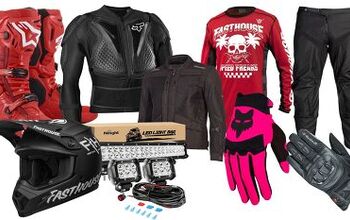



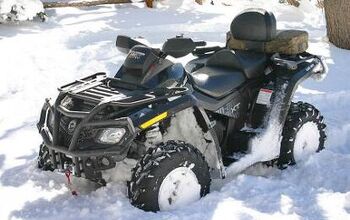



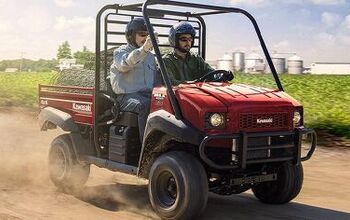
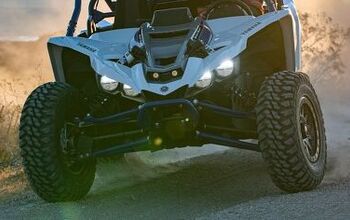
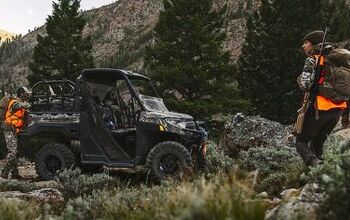
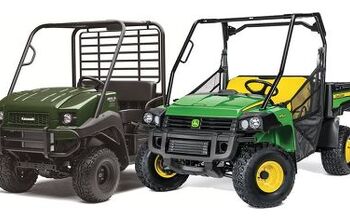

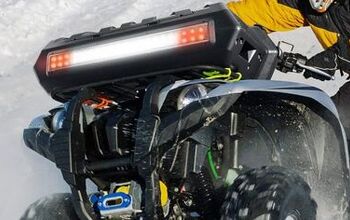
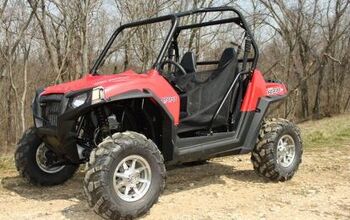

Comments
Join the conversation